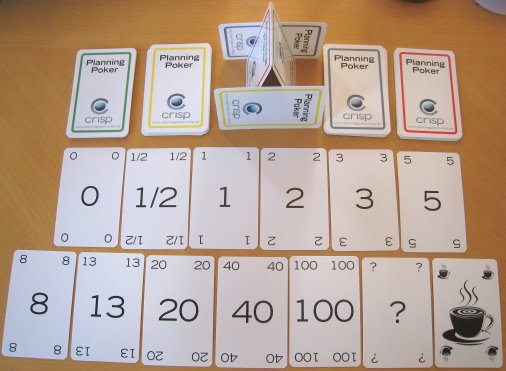Planning Poker Estimation Technique Is Comparable Across Teams
- Estimation Techniques Tutorial
- Estimation Techniques Resources
- Selected Reading
May 04, 2018 Planning poker, also called Scrum poker, is a consensus-based, gamified technique for estimating, mostly used to estimate effort or relative size of development goals in software development. In planning poker, members of the group make estimates by playing numbered cards face-down to the table, instead of speaking them aloud. No averages or numbers not on the scale. There's really no reason to use a three. The story carries enough risk or unknowns that it is not a two; therefore, it's very likely that it will actually be a four. Using an average or an off scale number can briefly (and unnecessarily) confuse a team member or stakeholder.
Planning Poker Estimation
Planning Poker is a consensus-based technique for estimating, mostly used to estimate effort or relative size of user stories in Scrum.
Estimation Techniques. Gross-level estimation techniques are in use by teams using agile approaches such as Scrum and Extreme Programming, and this paper will cover two of the most popular techniques: Planning Poker and Affinity Grouping. Estimation units used will also be examined, as these units should be such that they cannot be confused. Poker planning bring all such missing information to the table for discussion. Read my earlier posts on using story points to even out such differences. Even team finally agrees to go with higher number, scrum focus on honesty here. Say the team finished that story well before time, then they should pick-up something more.

Planning Poker combines three estimation techniques − Wideband Delphi Technique, Analogous Estimation, and Estimation using WBS.
Planning Poker was first defined and named by James Grenning in 2002 and later popularized by Mike Cohn in his book 'Agile Estimating and Planning”, whose company trade marked the term.

Planning Poker Estimation Technique
In Planning Poker Estimation Technique, estimates for the user stories are derived by playing planning poker. The entire Scrum team is involved and it results in quick but reliable estimates.
Planning Poker is played with a deck of cards. As Fibonacci sequence is used, the cards have numbers - 1, 2, 3, 5, 8, 13, 21, 34, etc. These numbers represent the “Story Points”. Each estimator has a deck of cards. The numbers on the cards should be large enough to be visible to all the team members, when one of the team members holds up a card.
One of the team members is selected as the Moderator. The moderator reads the description of the user story for which estimation is being made. If the estimators have any questions, product owner answers them.
Each estimator privately selects a card representing his or her estimate. Cards are not shown until all the estimators have made a selection. At that time, all cards are simultaneously turned over and held up so that all team members can see each estimate.
In the first round, it is very likely that the estimations vary. The high and low estimators explain the reason for their estimates. Care should be taken that all the discussions are meant for understanding only and nothing is to be taken personally. The moderator has to ensure the same.
The team can discuss the story and their estimates for a few more minutes.
The moderator can take notes on the discussion that will be helpful when the specific story is developed. After the discussion, each estimator re-estimates by again selecting a card. Cards are once again kept private until everyone has estimated, at which point they are turned over at the same time.
Repeat the process till the estimates converge to a single estimate that can be used for the story. The number of rounds of estimation may vary from one user story to another.
Benefits of Planning Poker Estimation
Planning poker combines three methods of estimation −
Expert Opinion − In expert opinion-based estimation approach, an expert is asked how long something will take or how big it will be. The expert provides an estimate relying on his or her experience or intuition or gut feel. Expert Opinion Estimation usually doesn’t take much time and is more accurate compared to some of the analytical methods.
Analogy − Analogy estimation uses comparison of user stories. The user story under estimation is compared with similar user stories implemented earlier, giving accurate results as the estimation is based on proven data.
Nov 24, 2015 Description: THE GAME OF LIFE – Spin to Win! Showcases a beautifully rendered digital game board, cards and spinner that capture the fun of the Classic game full of adventure & surprises! THE GAME OF LIFE will take players on a journey where fortunes can be wonand lost! Spin to win in life game.
Planning Poker Estimation Technique Is Comparable Across Teams 2016
Disaggregation − Disaggregation estimation is done by splitting a user story into smaller, easier-to-estimate user stories. The user stories to be included in a sprint are normally in the range of two to five days to develop. Hence, the user stories that possibly take longer duration need to be split into smaller use-Cases. This approach also ensures that there would be many stories that are comparable.